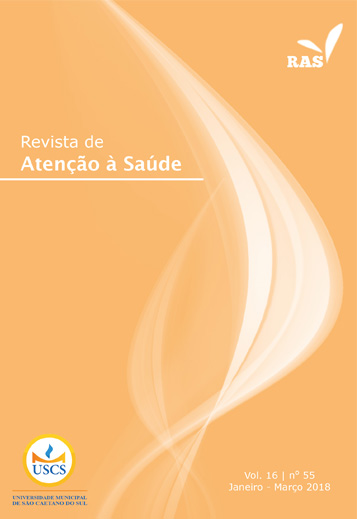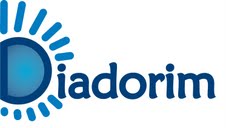EFFECTS OF THE VIBRATION PLATFORM ON THE NEUROMUSCULOSKELETAL SYSTEM IN PATIENTS WITH PARKINSON’S DISEASE: LITERATURE REVIEW
DOI:
https://doi.org/10.13037/ras.vol16n55.4902Keywords:
Parkinson’s disease, vibration platform, benefitsAbstract
Introduction: Parkinson’s disease (PD) is a neurodegenerative condition that causes limitations and incapacities in its bearers. Objective: This study aimed to perform a literature review about the effects of the vibration platform on the musculoskeletal system of PD patients. Materials and methods: The study was based on the research of papers published in PubMed/MedLine, LiLacs and Scielo databases, between January 2011 and January 2017, combining descriptors “Parkinson’s disease”, “vibration platform”, and “benefits” with the Boolean descriptors in the mentioned sources. Twenty-three articles were found in this study; thereafter the inclusion and exclusion criteria were applied, and only eight of them were included. Results: It should be noted that most of the aforementioned studies have demonstrated positive responses (frequencies between 3 Hz to 35 Hz), in variables such as gait, proprioception, quality of life and postural stability. Conclusion: The scientific evidence does not yet fully clarify the main physiological mechanisms for proving the vibration platform effects on Parkinson’s disease.
Downloads
References
Correia MGS, Paixão AO, Jesus AVF, Silva, FS, Messias GMS, Nunes TLGM, et al. Doença de Parkinson: uma desordem neurodegenerativa. Cad Grad Ciências Biológicas Saúde Unit. 2013;1(2):57-65.
Hohlefeld FU, Ehlen F, Tiedt HO, Krugel ÇK, Horn A, Kuhn AA, et al. Correlation between cortical and subcortical neural dynamics on multiple time scales in Parkinson’s disease. Neuroscience. 2015;298:145-60.
Wirdefeldt K, Adami HO, Cole P, Trichopoulos D, Mandel J. Epidemiology and etiology of Parkinson’s disease: a review of the evidence. Eur J Epidemiol. 2011;6(1):S1-58.
Bertoldi FC, Silva JAMG, Faganello-Navega FR. Influência do fortalecimento muscular no equilíbrio e qualidade de vida em indivíduos com doença de Parkinson. Fisioter Pesqui. 2013;20(2):117-22.
Rubert VA, Reis DC, Esteves AC. Parkinson’s disease and physical exercise. Rev Neurocienc. 2007;15(2):141-6.
Koo HJ, Lee HJ, Im H. Sequence determinants regulating fibrillation of human α-synuclein. Biochem biophys res commun. 2008;368(3):772-8.
Weintraub D, Comella CL, Horn S. Parkinson’s disease – Part 3: Neuropsychiatric symptoms. Am J Manag Care. 2008;14(2 Suppl):S59-69.
Andrade LAF, Barbosa ER, Cardoso F, Teive HAG. Doença de Parkinson: estratégias atuais de tratamento. 1ª ed. São Paulo: Seguimento Farma; 2010. 308 p.
Fernandez HH. Updates in the medical management of Parkinson disease. Cleve Clin J Med. 2012;79(1):28-35.
Guerrero E, Vasudevaraju P, Hegde ML, Britton GB, Rao KS. Recent advances in α-synuclein functions, advanced glycation, and toxicity: implications for Parkinson’s disease. Mol neurobiol. 2013;47(2):525-36.
Brandão APMS, Duarte MLM. Os efeitos da utilização da vibração de corpo inteiro na reabilitação da mobilidade e do equilíbrio nos doentes com Parkinson. Anais do Encontro Nacional de Engenharia Biomecânica; 2015; Uberlândia, Brasil. Rio de Janeiro: ABCM; 2015. p. 1-5.
Moreira AM, Galvão MLC, Araújo HAG, Silva AT, Reis LM, Silva AM, et al. Respiratory muscle training and vibrational therapy in patients with Parkinson’s disease. Revista Neurociências. 2015;23(4):479-85.
Lemos TV, Pereira LM. Efeitos da plataforma vibratória no sistema musculoesquelético. Movimenta. 2012;5(3):257-63.
Pereira MP. Os efeitos da manipulação do sistema proprioceptivo na locomoção de pessoas com doença de Parkinson com e sem congelamento da marcha: desenvolvimento, otimização e aplicabilidade de um sistema de vibração muscular [tese de doutorado]. Rio Claro (SP): Universidade Estadual Paulista; 2015.
Chouza M, Arias P, Viñas S, Cudeiro J. Acute effects of whole‐body vibration at 3, 6, and 9 Hz on balance and gait in patients with Parkinson’s disease. Movement Disorders. 2011;26(5):920-21.
Kaut O, Allert N, Coch C, Paus S, Grzeska A, Minnerop M, et al. Stochastic resonance therapy in Parkinson’s disease. NeuroRehabilitation. 2011;28(4):353-8.
Soares LT, Pereira AJF, Magno LDP, Figueiras HM, Sobral LL. Balance, gait and quality of life in Parkinson’s disease: effects of whole body vibration treatment. Fisioter Mov. 2014;27(2):261-70.
Gaßner H, Janzen A, Schwirtz A, Jansen P. Random whole body vibration over 5 weeks leads to effects similar to placebo: a controlled study in Parkinson’s disease. Parkinsons dis. 2014;2014:386-495.
Bonamigo ECB, Weller MH, Carvalho TGML, Strassburger SZ, Winkelmann ER, Eickhoff HM. Estudo comparativo dos efeitos da fisioterapia domiciliar com o treinamento em plataforma vibratória na doença de Parkinson. Cad Educ Saúde Fisioter. 2015;2(3):44-5.
Kaut O, Brenig D, Marek M, Allert N, Wüllner U. Postural stability in Parkinson’s disease patients is improved after stochastic resonance therapy. Parkinsons Dis. 2016;2016:1-7.
Belasen A, Rizvi K, Gee LE, Yeung P, Prusik J, Ramirez-Zamora A, et al. Effect of low-frequency deep brain stimulation on sensory thresholds in Parkinson’s disease. J neurosurg. 2016;126(2):397-403.
Baradaran N, Tan SN, Liu A, Ashoori A, Palmer SJ, Wang ZJ, et al. Parkinson’s disease rigidity: relation to brain connectivity and motor performance. Front neurol. 2013;4:67.
Jordan MJ, Norris SR, Smith DJ, Herzog W. Vibration training: an overview of the area, training consequences, and future considerations. J Strength Cond Res. 2005;19(2):459-66.
Shinohara M. Effects of prolonged vibration on motor unit activity and motor performance. Med sci sports exerc. 2005;37(12):2120.
King LK, Almeida QJ, Ahonen H. Short-term effects of vibration therapy on motor impairments in Parkinson’s disease. NeuroRehabilitation. 2009;25(4):297-306.
Lima LO, Rodrigues-de-Paula F. Muscular power training: a new perspective in physical therapy approach of Parkinson’s disease. Braz J Phys Ther. 2012;16(2):173-4.
Lau RW, Teo T, Yu F, Chung RC, Pang MY. Effects of whole-body vibration on sensorimotor performance in people with Parkinson disease: a systematic review. Phys ther. 2011;91(2):198-209.
Dowling GA, Hone R, Brown C, Mastick J, Melnick M. Feasibility of adapting a classroom balance training program to a video game platform for people with Parkinson’s disease. Telemed J E Health. 2013;19(4):298-304.
Rodrigues RS, Menezes NC, Weis LC. Os benefícios da plataforma vibratória em pacientes portadores da doença de Parkinson – revisão bibliográfica. Anais do 7º Salão de Ensino e de Extensão; 2016; Santa Cruz do Sul, Brasil. Santa Cruz do Sul: Unisc; 2016. p. 67.
Schneider C, Kaut O, Fließbach K, Wüllner U. Stochastic whole body vibration induced basal ganglia activation. Proceedings of the Congress of the German Society of Neurology (DGN ‘12); 2012 Hamburg, Germany.
Payoux P, Brefel-Courbon C, Ory-Magne F, Regragui W, Thalamas C, Balduyck S, et al. Motor activation in multiple system atrophy and Parkinson disease: a PET study. Neurology. 2010;75(13):1174-80.
Downloads
Published
Issue
Section
License
Policy Proposal for Journals offering Free Delayed Access
Authors who publish in this magazine agree to the following terms:
- Authors maintain the copyright and grant the journal the right to the first publication, with the work simultaneously licensed under a Creative Commons Attribution License after publication, allowing the sharing of the work with recognition of the authorship of the work and initial publication in this journal.
- Authors are authorized to assume additional contracts separately, for non-exclusive distribution of the version of the work published in this magazine (eg, publishing in institutional repository or as a book chapter), with the acknowledgment of the authorship and initial publication in this journal.
- Authors are allowed and encouraged to publish and distribute their work online (eg in institutional repositories or on their personal page) at any point before or during the editorial process, as this can generate productive changes, as well as increase impact and citation of the published work (See The Effect of Open Access).









